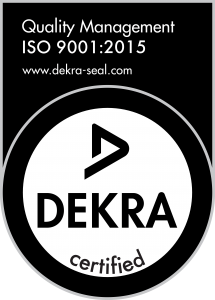860-829-2244
Gino Parrott
@ginoparrott09
Profile
Registered: 4 months, 1 week ago
How to Keep Your On-line Shopping Secure: A Safety Checklist
Online shopping has revolutionized the way we purchase products, making it simpler than ever to browse and purchase items from the comfort of our homes. However, with this comfort comes an increased risk of cybercrime, including identity theft, phishing scams, and financial fraud. In case you continuously shop online, it's essential to take steps to protect yourself. Use this comprehensive safety checklist to keep your online shopping secure and avoid falling victim to cyber threats.
1. Shop on Secure Websites Only
Always verify that the website you’re using is secure. Look for URLs that start with "https"—the "s" stands for secure. You should also see a padlock icon next to the web address in your browser. These indicators show that the site uses encryption to protect your information.
Stick to well-known, reputable retailers every time possible. For those who're shopping from a lesser-known store, take time to research their credibility by reading buyer opinions and checking their presence on platforms like Trustpilot or Better Enterprise Bureau.
2. Use Sturdy, Unique Passwords
Your account credentials are a major target for hackers. Create robust, distinctive passwords for each online shopping account. Keep away from using widespread words, personal information, or repetitive number sequences. A great password ought to embody a mix of highercase and lowercase letters, numbers, and symbols.
To make managing your passwords simpler, consider utilizing a password manager. These tools store and autofill your login particulars securely, serving to you preserve strong password hygiene across all of your accounts.
3. Keep away from Public Wi-Fi When Shopping
Public Wi-Fi networks should not secure and can expose your data to cybercriminals. Avoid shopping or getting into personal information when connected to public hotspots in cafés, airports, or shopping malls.
If you happen to should use public Wi-Fi, use a VPN (Virtual Private Network). A VPN encrypts your internet connection and provides a secure tunnel in your data, making it tough for hackers to intercept your information.
4. Enable Two-Factor Authentication (2FA)
Many on-line retailers and payment services supply two-factor authentication. This adds an additional layer of security by requiring not only a password but also a verification code sent to your phone or email.
Even when somebody obtains your password, they won’t be able to access your account without the second form of identification. Enable 2FA on all accounts that assist it, especially those tied to your financial information.
5. Monitor Bank and Credit Card Statements Recurrently
Stay vigilant by reviewing your financial statements frequently. Look for unauthorized or suspicious transactions and report them immediately to your bank or credit card company.
Many banks supply real-time alerts via SMS or e-mail for transactions made with your card. Activating these notifications may also help you catch fraudulent activity as quickly as it occurs.
6. Be Cautious of Phishing Scams
Phishing scams are a standard technique used to steal login credentials and payment information. These scams typically seem as emails or pop-ups that mimic legitimate retailers, urging you to click on malicious links or provide personal information.
Don’t click on suspicious links, and never share sensitive information through email. Always navigate directly to a retailer’s official website relatively than clicking through ads or messages.
7. Update Software and Units
Outdated software can have vulnerabilities that cybercriminals exploit. Keep your operating system, browser, and antivirus programs up to date regularly to ensure they have the latest security patches.
Turn on computerized updates whenever possible, and run frequent scans with a trusted antivirus or anti-malware tool.
8. Use Secure Payment Methods
Credit cards and trusted digital wallets like PayPal, Apple Pay, or Google Pay supply better fraud protection than debit cards. In addition they often can help you dispute unauthorized prices more easily.
Avoid direct bank transfers or sending cash through unsecured platforms, particularly to sellers you don’t know or trust.
If you beloved this article therefore you would like to acquire more info concerning kraken7jmgt7yhhe2c4iyilthnhcugfylcztsdhh7otrr6jgdw667pqd.onion generously visit the web site.
Website: https://kraken4qzqnoi7ogpzpzwrxk7mw53n5i56loydwiyonu4owxsh4g67yd--onion.com
Forums
Topics Started: 0
Replies Created: 0
Forum Role: Participant

